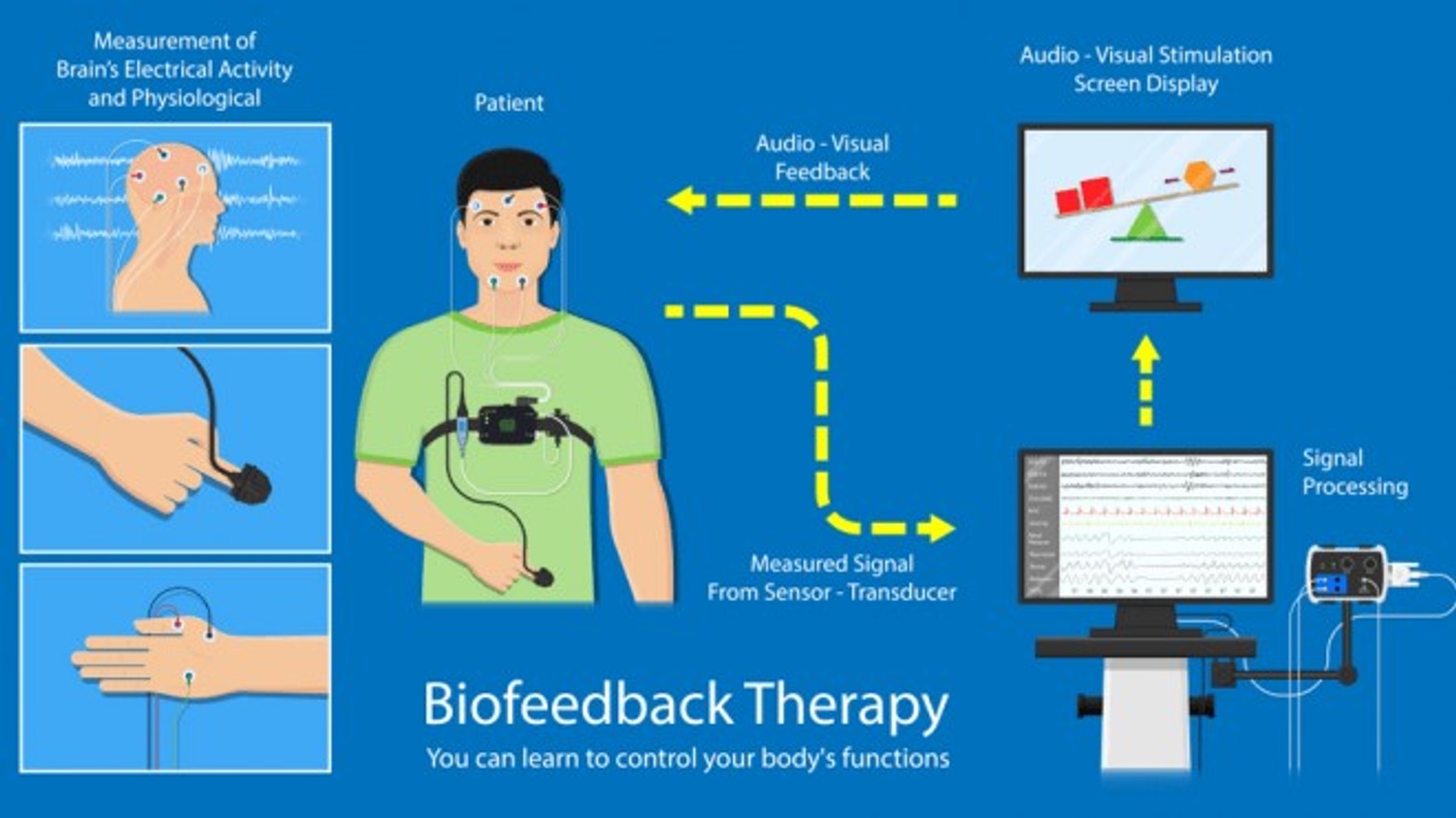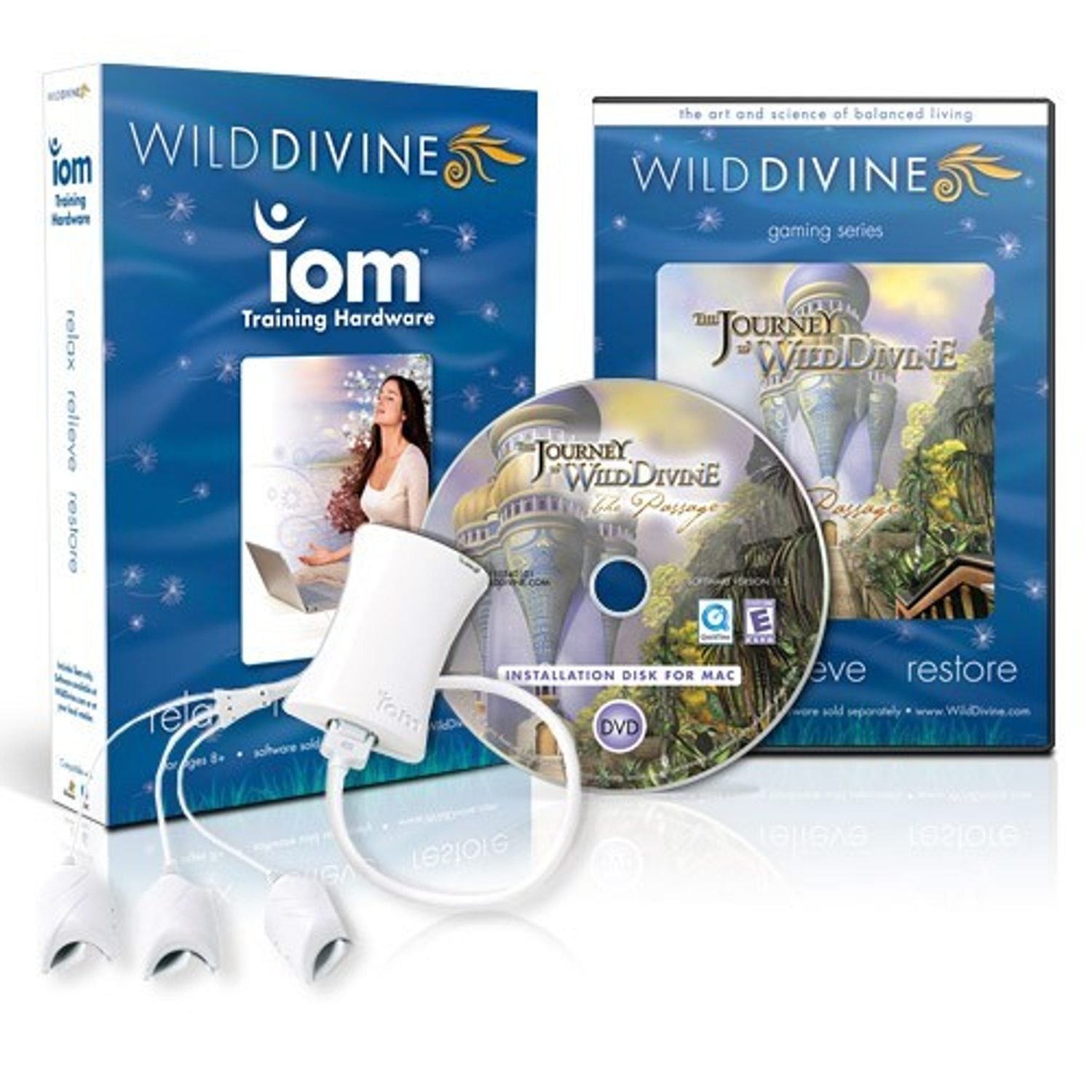Biofeedback method in Vocational Rehabilitation - URI-Soča
Treating stress: Biofeedback, Anxiety and Pain in Vocational Rehabilitation
Used by URI-Soča
University Rehabilitation Institute Republic of Slovenia
Introduction: Psychological factors play an important role in treatment and vocational rehabilitation and its results and outcomes. Researches show that there is important link between illness, increased anxiety, depression and health concerns. When dealing with anxiety, psychosomatic problems and chronical pain relaxation techniques are proven to be effective (Dawn in Seers, 1998).
When a person is under stress, the body changes its reaction on the vegetative nervous system: heart rate speeds up, muscles tighten, blood pressure rises, sweating increases and breathing quickens. This body reactions can be measured with biofeedback method. Biofeedback measures bodily reactions and projects information on computer screen. By using biofeedback it is possible to see these stress responses as they happen on screen and get immediate feedback as the person tries to stop them. That is how the person can learn to make deliberate physical changes in its own body, such as relaxing specific muscles, to reduce pain and anxiety.

Picture online source
Biofeedback can help many different conditions, like migraine headaches, chronic pain, incontinence, and high blood pressure. One of the most common uses of biofeedback is for anxiety. It helps people to be more aware of body's responses when stressed and anxious and learn how to control those responses. Also, common use of biofeedback is for relieving pain, by helping to identify tight muscles and learn to relax those muscles. Several different relaxation exercises are used in biofeedback therapy, including deep breathing and progressive muscle relaxation (alternately tightening and then relaxing different muscle groups).
Biofeedback is generally safe, but it might not be appropriate for everyone. Biofeedback devices might not work properly on people with certain medical conditions, such as heart rhythm problems or certain skin conditions.
On this theoretical basis URI included biofeedback technique in its program of vocational rehabilitation, especially for people dealing with increased anxiety and increased body pain.
The aim of the activity is to teach relaxation techniques to people involved in vocational rehabilitation, include them in educational workshops for stress, anxiety and chronic pain and use of biofeedback in order to reduce symptoms of anxiety and level of chronical pain. With this goal URI is improving its programs, taking a more holistic approach to vocational rehabilitation and obtaining overall better outcomes.
Method: using Wild Divine biofeedback with its software and finger sensors.
Picture online source
Participants: 40 adult people (from age 25 to 55) from the vocational rehabilitation program were included. Participants had an increased level of anxiety. For that the State-Trait Anxiety Inventory (STAI) was used. It is a psychological inventory consisting of 40 self-report questions measuring two types of anxiety: state anxiety (about an event) and trait anxiety (as personal characteristic). People with decreased health concerns, stress level and with chronic pain were also included (used CPAQ-R Questionnaire, for Chronic Pain Acceptance).
Procedure: 4 workshops were conducted, one each week for 60 minutes, on 4 different topics: 1) stress 2) anxiety and relaxation techniques (breathing), 3) progressive muscle relaxation and 4) chronic pain. Then biofeedback sessions were conducted. A typical biofeedback session lasted 30 minutes, once per week for 6 weeks, first with a psychologist and later with participants people using biofeedback in autonomy. After the program, chronic pain and anxiety are measured one more time.
Results:
Research is still in progress, so URI does not have any statistical proof for efficiency of the program yet. During their participation in the program people reported lower level of stress and anxiety and improvements in their level of pain.
Literature and additional resources:
- Dawn, C., in Seers, K. (1998). Relaxation for the relief of chronic pain: a systematic review. Journal of Advanced Nursing. Volume 27, Issue 3, 476–487.
- Kroenke K, Outcalt S, Krebs E., Bair, M. J., Wu, J., Chumbler, N., in Yu, Z. (2013). Association between anxiety, health-related quality of life and functional impairment in primary care patients with chronic pain. General Hospital Psychiatry, 35 (4), 359-65.
- McCraken, L. M., Vowles, K. E. in Eccleston, C. (2004). Acceptance of chronic pain: component analysis and a revised assessment method. Pain, 107, 159-166.
- Spielberger, C. D., Gorsuch, R. L., in Lushene, R. E. (1970). Manual for the State Trait Anxiety Inventory. Palo Alto, CA: Consulting Psychologist’s Press.
- http://www.matejtusak.si/biofeedback.html
- https://www.mayoclinic.org/tests-procedures/biofeedback/about/pac-20384664
- https://en.wikipedia.org/wiki/State-Trait_Anxiety_Inventory

